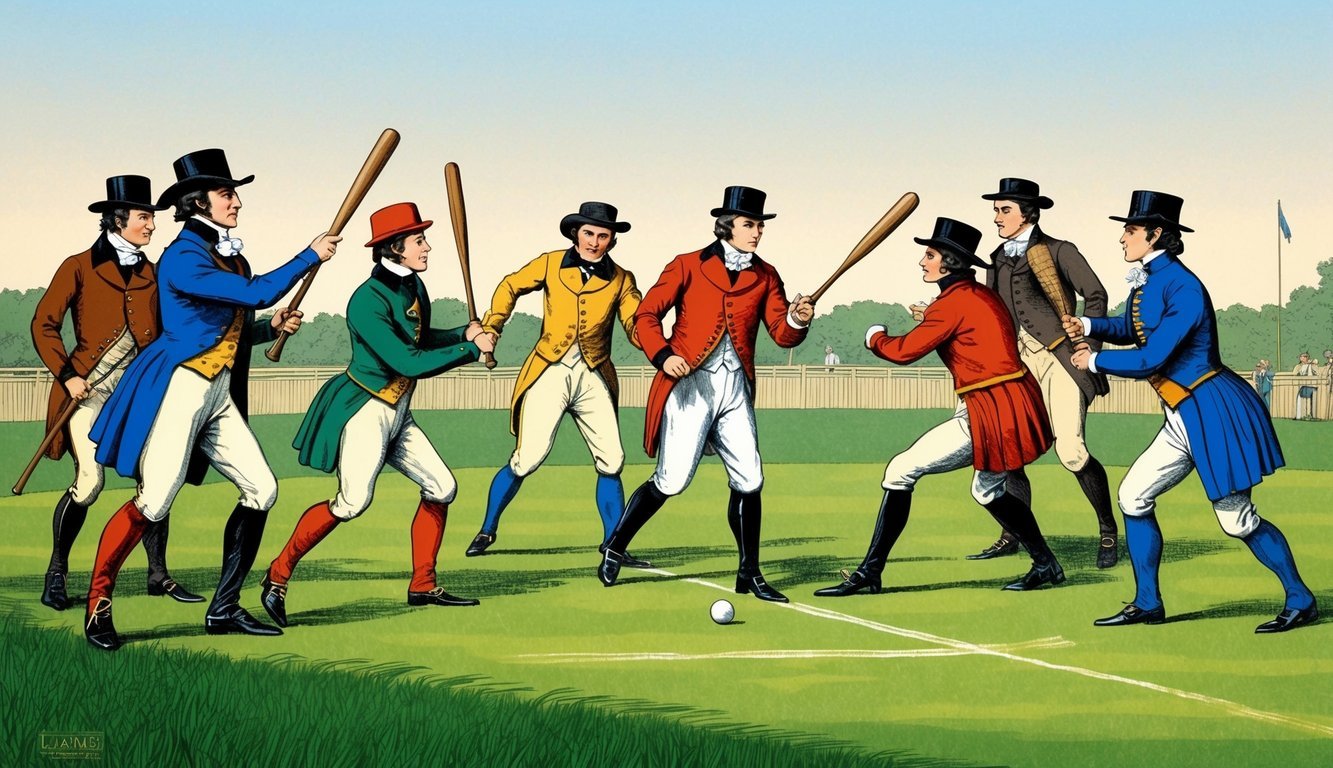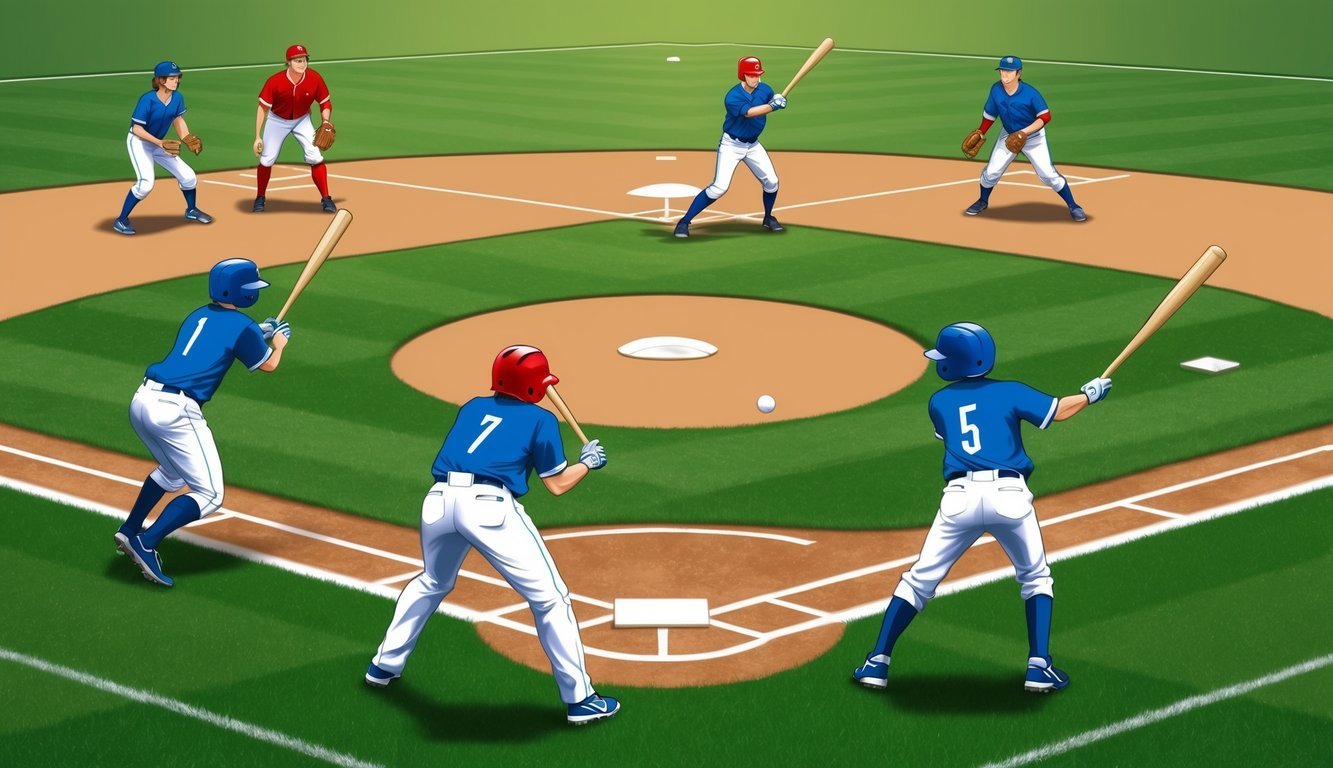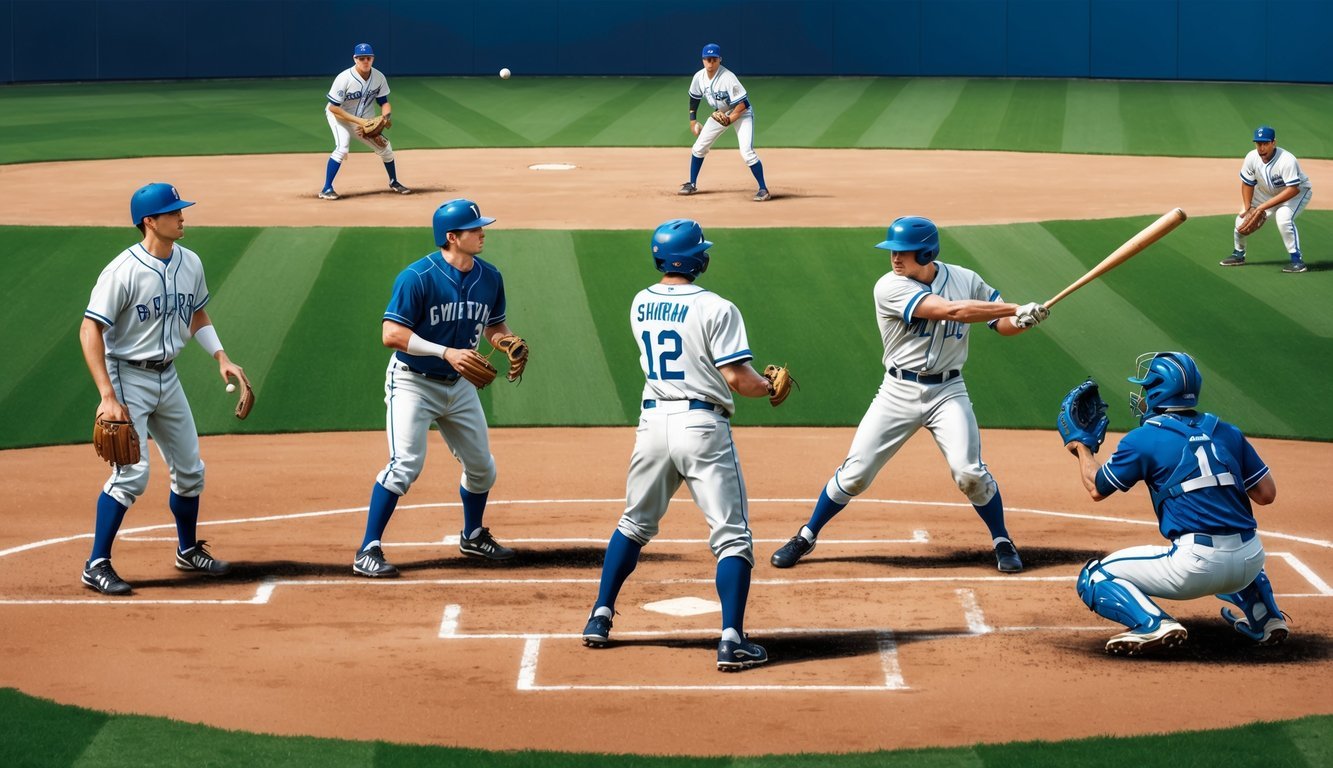Baseball, often called America’s national pastime, has a rich and complex history.
The game’s origins can be traced back to early bat-and-ball games played in England during the 18th century.
These precursors, including rounders and cricket, laid the foundation for what would eventually become modern baseball.
Baseball as we know it today took shape in the United States during the mid-19th century. While the myth of Abner Doubleday inventing the sport in Cooperstown, New York, has been debunked, figures like Alexander Cartwright played crucial roles in formalizing the rules.
Cartwright’s contributions helped distinguish baseball from its European ancestors and set it on the path to becoming a uniquely American sport.
The game quickly gained popularity across the United States, spreading from urban centers to rural communities.
As baseball evolved, it became deeply intertwined with American culture, reflecting societal changes and serving as a unifying force during times of national challenge.
This connection to American identity helped cement baseball’s status as the national pastime, a title it has held for generations.
Early Forms of Bat-and-Ball Games
Bat-and-ball games have a rich history stretching back centuries, with various forms emerging across Europe and North America.
These early games laid the groundwork for what would eventually become modern baseball.
From Stoolball to Town Ball
Stoolball, an English game dating back to the 14th century, is often considered a precursor to cricket and baseball.
Players defended a stool with their hands while others threw balls at it.
By the 18th century, “town ball” emerged in America as a popular variation of these games.
It featured informal rules that varied by location, with players hitting a ball and running between bases.
Rounders and Cricket: European Influences
Rounders, a British game, shared similarities with early baseball.
Players hit a ball and ran around four bases to score points.
Cricket, another English sport, influenced baseball’s development.
Both games used bats, balls, and fielders.
In 1744, John Newbery’s “A Little Pretty Pocket-Book” mentioned “base-ball” alongside cricket and trap-ball, showing these games’ popularity in England.
The Massachusetts and New York Games
In America, two main versions of baseball emerged: the Massachusetts Game and the New York Game.
The Massachusetts Game allowed more players and had a square infield.
The New York Game, codified by the Knickerbocker Club in 1845, became the foundation for modern baseball.
It introduced concepts like foul territory and three strikes.
These regional variations showcased baseball’s evolving nature in the mid-19th century.
The New York rules eventually gained widespread acceptance, paving the way for organized leagues and professional play.
The Establishment of Modern Baseball

The evolution of baseball into its modern form involved key figures, organizations, and rules that shaped the game we know today.
This period saw the creation of standardized rules and the emergence of influential clubs that laid the foundation for professional baseball.
The Knickerbocker Base Ball Club and the Knickerbocker Rules
The Knickerbocker Base Ball Club, founded in New York in 1845, played a crucial role in baseball’s development.
They created the Knickerbocker Rules, which became the basis for modern baseball rules.
These rules introduced concepts like three strikes for an out and three outs per inning.
The Knickerbockers also established the diamond-shaped infield and set the bases 90 feet apart.
Their first recorded game took place on June 19, 1846, at Elysian Fields in Hoboken, New Jersey.
This event is often considered the first organized baseball game.
Alexander Cartwright: The Father of Baseball?
Alexander Cartwright is often credited as the “Father of Baseball” due to his involvement with the Knickerbocker Base Ball Club.
He played a significant role in codifying the Knickerbocker Rules.
Cartwright helped popularize the game beyond New York, spreading it to other parts of the country.
He introduced baseball to Hawaii after moving there in 1849.
While his exact contributions are debated, Cartwright’s influence on the sport’s early development is widely recognized.
In 1938, he was inducted into the Baseball Hall of Fame.
The Myth of Abner Doubleday and Cooperstown
For many years, Abner Doubleday was erroneously credited with inventing baseball in Cooperstown, New York, in 1839.
This myth gained traction in the early 20th century.
A special commission in 1907, led by sporting goods magnate Albert Spalding, promoted this story.
They based their findings on questionable testimony from a single source.
Modern historians have thoroughly debunked the Doubleday myth.
Despite this, Cooperstown remains closely associated with baseball history.
It’s home to the National Baseball Hall of Fame and Museum, which opened in 1939.
Baseball’s Evolution and Professionalization

Baseball’s journey from amateur pastime to professional sport transformed the game.
This evolution brought new leagues, teams, and playing styles that shaped baseball’s identity.
The National Association of Base Ball Players
The National Association of Base Ball Players formed in 1857, marking a crucial step in baseball’s organization.
Initially an amateur league, it set standardized rules and fostered competition between clubs.
As the sport grew more popular, some teams began paying talented players under the table.
This practice led to the formation of the first professional team, the Cincinnati Red Stockings, in 1869.
The Red Stockings’ success sparked a shift towards professionalism.
Other clubs followed suit, leading to tensions between amateur and professional teams within the association.
The National and American Leagues
In 1876, the National League was established as the first professional baseball league.
It introduced contracts, schedules, and a more structured approach to the sport.
The American League emerged in 1901 as a rival to the National League.
This competition led to the World Series in 1903, pitting the champions of each league against each other.
The two leagues eventually came together under the Major League Baseball umbrella, creating the structure we know today.
Significant Changes, Wars, and the Dead-Ball Era
The Dead-Ball Era, from 1900 to 1920, was characterized by low-scoring games and strategic play.
Pitchers dominated, and home runs were rare.
World War I impacted baseball, with many players serving in the military.
The sport rebounded after the war, entering a new era of popularity.
Rule changes, like the introduction of the cork-center baseball in 1910, gradually increased scoring.
This shift set the stage for the rise of power hitters and the end of the Dead-Ball Era.
Cultural and Historical Impact
Baseball’s influence extends far beyond the diamond, shaping American culture and society in profound ways.
The sport has played a pivotal role in social progress, international relations, and cultural identity.
Baseball as America’s Pastime
Baseball earned its moniker as America’s National Pastime due to its deep-rooted connection to U. S. culture.
The sport’s rhythms and traditions became intertwined with American life, especially during the early 20th century.
Fans embraced the game not only for its competitive spirit but also for the moments of community it fostered, filling stadiums and creating connections among diverse audiences.
As people gathered to watch their favorite teams, they engaged in spirited debates about strategy and statistics, including the intricacies of what constitutes a run in baseball.
This shared passion for the sport not only bolstered local pride but also shaped the identity of a nation that found solace in the rhythm of the game.
Babe Ruth emerged as baseball’s first superstar, captivating fans with his prodigious home runs.
His larger-than-life persona helped transform the sport into a national obsession.
The World Series, baseball’s annual championship, became a cultural touchstone.
Families gathered around radios, and later televisions, to follow the Fall Classic.
Baseball parks grew into community hubs, fostering a sense of local pride and identity.
The crack of the bat and the smell of hot dogs became synonymous with summer for many Americans.
Integration and Jackie Robinson
Jackie Robinson’s breaking of the color barrier in 1947 marked a watershed moment in both baseball and American history.
His courage and skill on the field helped pave the way for the Civil Rights movement.
Robinson faced intense discrimination but persevered, earning respect through his talent and character.
His success opened doors for other Black players, gradually integrating the sport.
Martin Luther King Jr. praised Robinson’s impact, noting how it made his own success possible.
Baseball’s integration predated many other areas of American society, serving as a model for change.
Global Reach: Latin America and Asia
Baseball’s influence spread beyond U.S. borders, taking root in Latin America and parts of Asia.
Cuba embraced the sport early on, producing many talented players.
The Dominican Republic became a hotbed of baseball talent.
Players like Juan Marichal and Pedro Martinez achieved stardom in Major League Baseball.
Japan developed its own professional leagues, with a playing style that emphasized teamwork and fundamentals.
The sport’s popularity in Japan led to regular player exchanges with MLB.
Latin American and Asian players have enriched Major League Baseball, bringing diverse skills and cultures to the game.
International competitions like the World Baseball Classic showcase the sport’s global appeal.
The Modern Game

Baseball evolved significantly in the 20th century, transforming into the sport we recognize today.
Rule changes, technological advancements, and cultural shifts shaped its development.
Advancements in Rules and Equipment
The modern baseball diamond took shape with standardized base distances and pitching mound heights.
Bats became more refined, with strict regulations on materials and dimensions.
Balls underwent changes too, with cork centers and tighter winding for improved performance.
In 1969, MLB lowered the pitcher’s mound to create more offense.
The designated hitter rule, introduced in 1973, allowed specialized batters to hit in place of pitchers in the American League.
Protective gear improved player safety.
Batting helmets became mandatory in 1971.
Catchers’ masks, chest protectors, and shin guards evolved to offer better protection.
The Expansion of Teams and Audiences
MLB grew from 16 teams in 1960 to 30 by 1998.
This expansion brought baseball to new cities and regions across North America.
The All-American Girls Professional Baseball League, active from 1943 to 1954, paved the way for women in professional sports.
Stadiums modernized, offering improved seating, amenities, and fan experiences.
Multi-purpose venues gave way to baseball-specific ballparks in the 1990s and 2000s.
International talent influx diversified the game.
Players from Latin America, Asia, and other regions became MLB stars, broadening the sport’s global appeal.
Impact of Television and Free Agency
Television broadcasts revolutionized baseball’s reach.
The first televised World Series in 1947 brought the game into living rooms nationwide.
Color TV in the 1960s enhanced the viewing experience.
Cable networks like ESPN dedicated extensive coverage to baseball, offering in-depth analysis and highlights.
Free agency, introduced in 1975, allowed players to negotiate with multiple teams.
This shift increased player salaries and mobility, changing team dynamics and roster construction.
The steroid era of the 1990s and early 2000s saw record-breaking performances.
However, revelations about performance-enhancing drug use led to stricter testing policies and renewed focus on clean competition.
